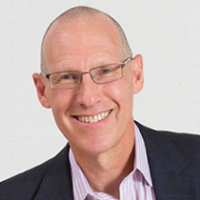 By Morris Panner, President, Intelerad
By Morris Panner, President, Intelerad
Twitter: @Intelerad
Twitter: @mpanner
Modern medicine has revolutionized cancer treatment, and the prognosis for many cancers today is very good if caught early. That’s why regular screenings for certain cancers are a crucial part of preventive care. Unfortunately, these screenings are not always readily available to everyone, a shameless issue that can otherwise lead to preventable consequences.
What Kinds of Disparities are Prevalent in Cancer Screenings?
Linda Goler Blount reported last year in Oncology Times on a study from the Journal of the American College of Radiology. Researchers found that Black women weren’t as likely to, receive a digital breast tomosynthesis (DBT) screening, the standard for annual breast cancer screenings. “Simply put, the study revealed Black women are receiving inferior breast cancer screening compared to White women—an alarming racial disparity,” wrote Goler Blount. “The data suggests this disparity is an urgent issue—particularly because research has shown that Black women are almost 40 percent more likely to die from breast cancer than non-Hispanic White women, despite having a similar breast cancer incidence rate.”
These disparities can be found when the data is studied around many different types of cancer screenings. For example, a study in Radiology found, when analyzing data from a 2019 Behavioral Risk Factor Surveillance System survey, that racial and ethnic minority groups are less likely to even be eligible for lung cancer screenings.
Another study, published in the Journal of Clinical Oncology, found that patients who are experiencing delayed access to medical services “due to cost” are not adequately receiving age-appropriate cancer screenings, demonstrating that economic disparities play a role.
Understanding The Issues Underlying Disparities
Disparities in medical care are driven by several factors that particularly affect people in certain racial and socioeconomic groups. A major one is lack of access to health insurance, since people without insurance are more likely to wait until a problem has worsened before seeking medical attention.
Lack of access to good health insurance can also be a problem. For instance, even if a yearly mammogram is free as a part of a standard insurance plan, what if a small cyst is spotted in the image? The patient will be asked to come in for follow-up imaging, likely an ultrasound. If the patient’s insurance won’t cover ultrasounds, the patient may choose to forgo it entirely.
Living in areas with limited access to doctors, specialists, or well-equipped medical facilities can make it less likely that a person will receive life-saving cancer screenings. That could be due to an inexperienced doctor not knowing to order one for a patient, or simply the unavailability of testing equipment near enough to the patient.
Closing The Gaps
There are steps that can be taken to help overcome these disparities. Primary care doctors are typically on the front lines of all aspects of healthcare, and if they integrate risk assessments into annual wellness visits with patients, this could help identify early on what types of cancer screenings should be ordered. This would be a good opportunity for example, to suggest a man begin undertaking prostate cancer screenings every year if there is family history, or that a patient receive annual lung cancer screenings if they’ve been a long-time smoker.
Reaching People Where They Live
Because infrequent visits to the doctor is often one of the problems underlying these disparities to begin with, effective outreach can make a difference. A clinical trial of patients at a community health center in Philadelphia showed that when people were sent a series of text messages about getting a colorectal cancer screening and then mailed a fecal immunochemical test to use at home, about 20% did the test and returned it by mail.
“Patient navigators” have become an increasingly common way of bringing a human touch to outreach. In Delaware, they have been shrinking gaps in cancer deaths using navigators who talk to people directly. The process starts with identifying ZIP codes where the screening rates are the lowest. “Navigators then fan out across grocery stores and laundromats in those communities, dropping flyers, setting up booths and meeting with religious leaders,” reported NPR. “They arrange mobile screening vans to factories and other workplaces during work hours.”
By scaling up methods like these across other communities and states, there is reason to hope that we can ensure more people receive cancer screenings that are appropriate for them based on age, medical history, and other risk factors. We have plenty of great technology to help detect cancer early, and we can make it accessible to people regardless of race, ethnicity, or socioeconomic status.
